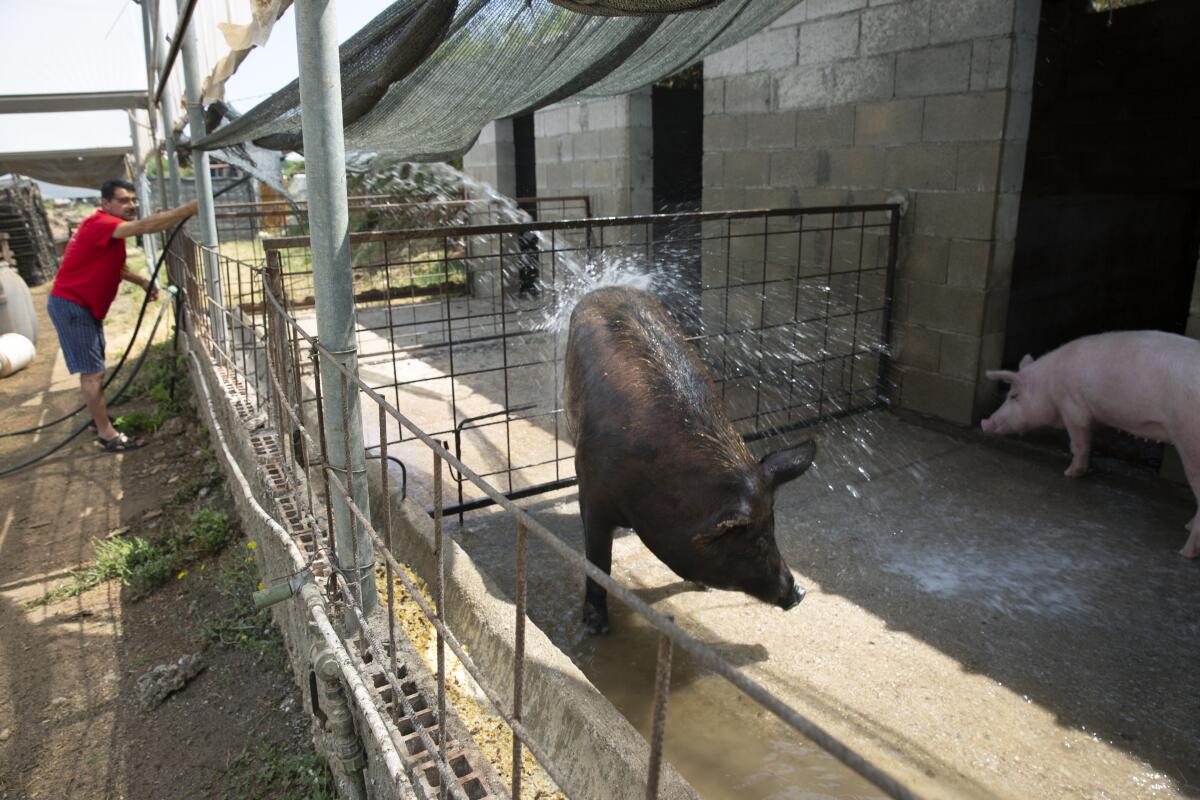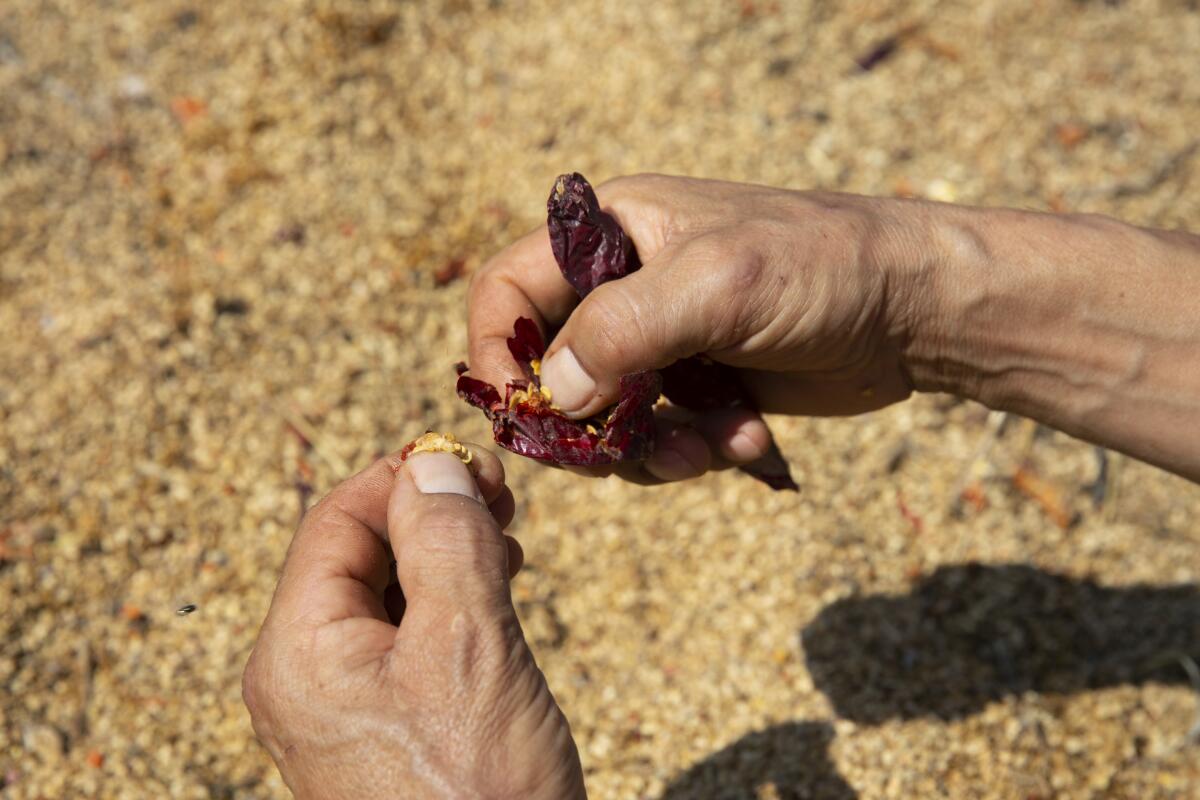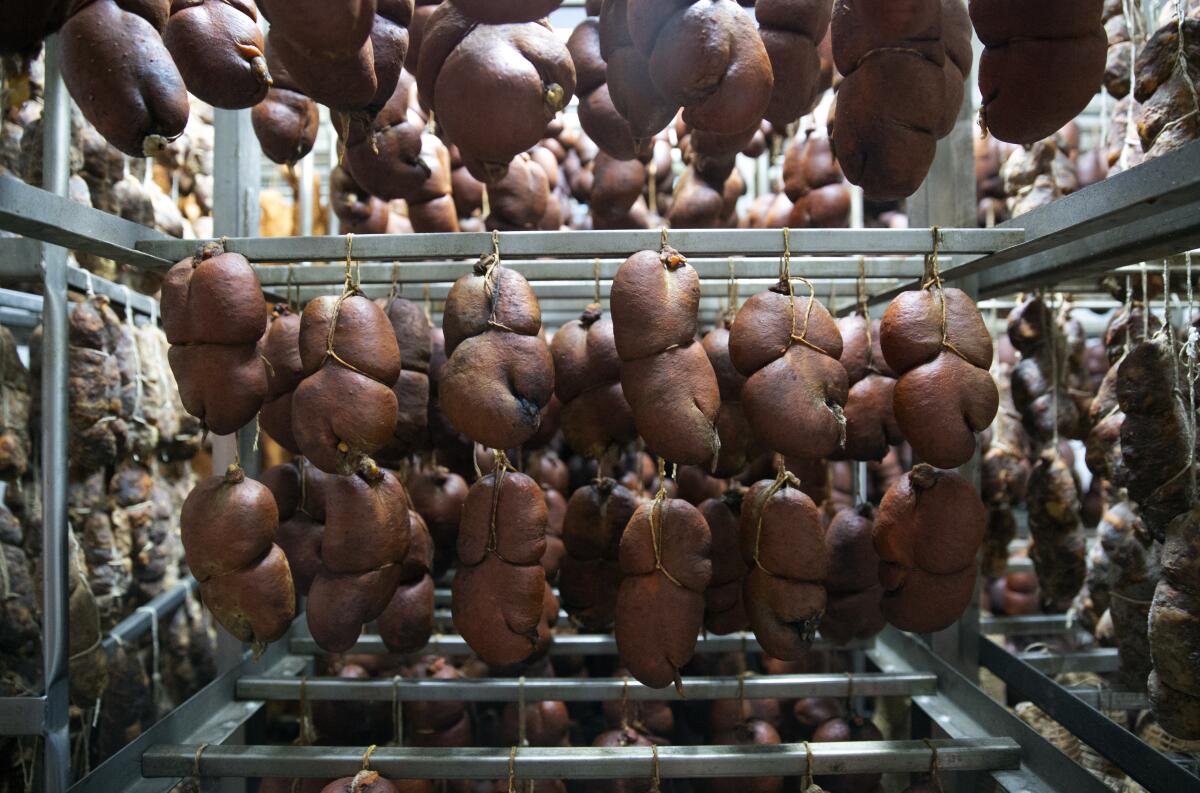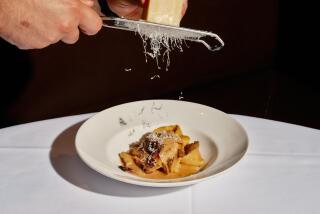‘Nduja: Calabria’s prized spicy salumi

Francesco Fiamingo has been curing ‘nduja for decades. View how to make the fiery, pork salami in a VR-capable headset for the full experience.
The origins of ’nduja — a spreadable, spicy salumi served with bread, in pastas and on pizzas, and one of Calabria’s most notable exports — are hazy. The word, pronounced en-DOO-yah, seems to come from the French andouille, which means spicy sausage. Some speculate that Spaniards brought fiery salami to Italy in the 16th century, along with chile peppers.

Originally a peasant sausage, ‘nduja is composed of back fat, belly and trimmings of lean meat — the same mix used to produce mortadella. The meat is butchered, then ground up with large quantities of Calabrian chile pepper, which makes up 30% of the spreadable sausage. Three varieties of local peppers are added — two spicy, one sweet. The ground paste is cased and smoked with oak, olive and acacia, then cured in a temperature-controlled room anywhere from 45 days to up to a year.

Most of the world’s supply of the hot salami is made in Spilinga, Calabria, a hillside town overlooking the Tyrrhenian Sea. ’Nduja e Salumi Gabriella Bellantone owner Francesco Fiamingo is the second largest ’nduja producer in the area; the tradition dates back at least four generations in his family.

Fiamingo makes 100,000 kilos or about a quarter of a million pounds of ’nduja every year, the majority of which is exported to Europe and Canada. Pinning down the history of ’nduja may be challenging, but the road to ’nduja leads to Calabria.
More to Read
Eat your way across L.A.
Get our weekly Tasting Notes newsletter for reviews, news and more.
You may occasionally receive promotional content from the Los Angeles Times.









